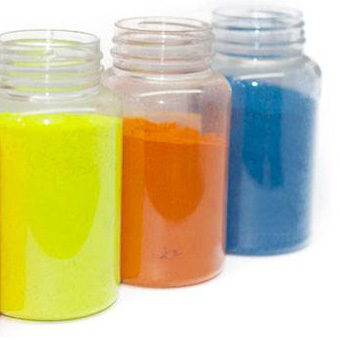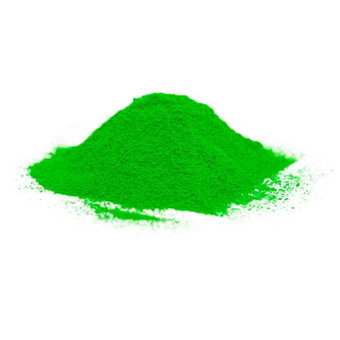
PVC Color Sand
For calendering, extrusion, injection molding use & leather,sheet, film, pellet, and coloring.
For calendering, extrusion, injection molding use & leather,sheet, film, pellet, and coloring.
Jiuhlih Brand "PVC Color Sand (NS Color Sand)" are offered by specially selected pigments of excellent grades PVC resins, plasticizers, stabilizers, dispersing agents, etc., then by grinding and mixing with mechanical facilities to become a processed pigment of sand forms.These PVC pigment particles of this series have a very high concentrated tinting strength, best dispersion ability, high stability,non-dusting, no smell, no caking, free of heavy metals, will not contaminate the processing equipment and working environment, easy to be measured & precise compounding with other colorants.
These PVC pigment particles exhibit highly concentrated tinting strength, best dispersion ability, high stability, non-dusting, will not soil user's hands, will not contaminate the processing equipment and working environment, easy to be measured & precise compounding with other colorants.
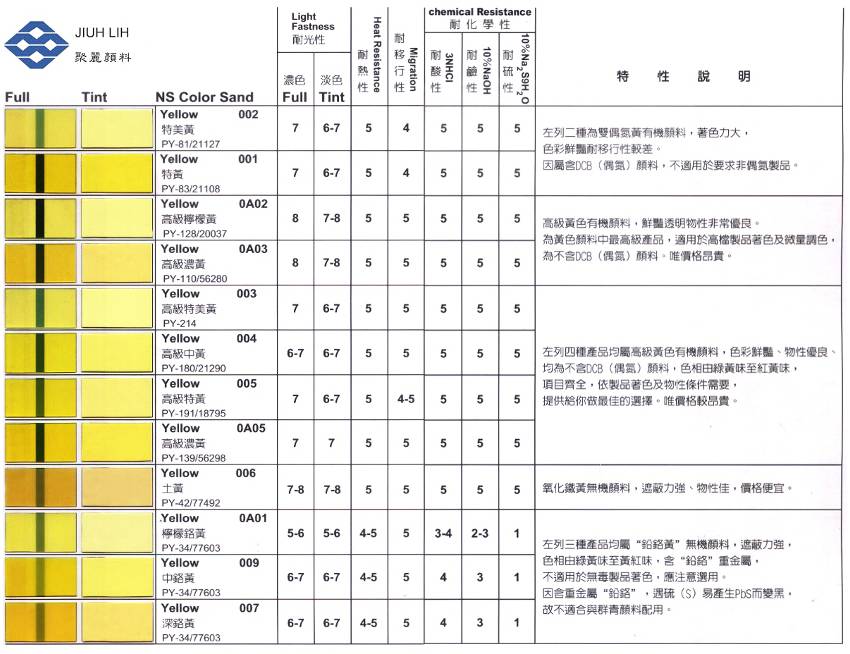
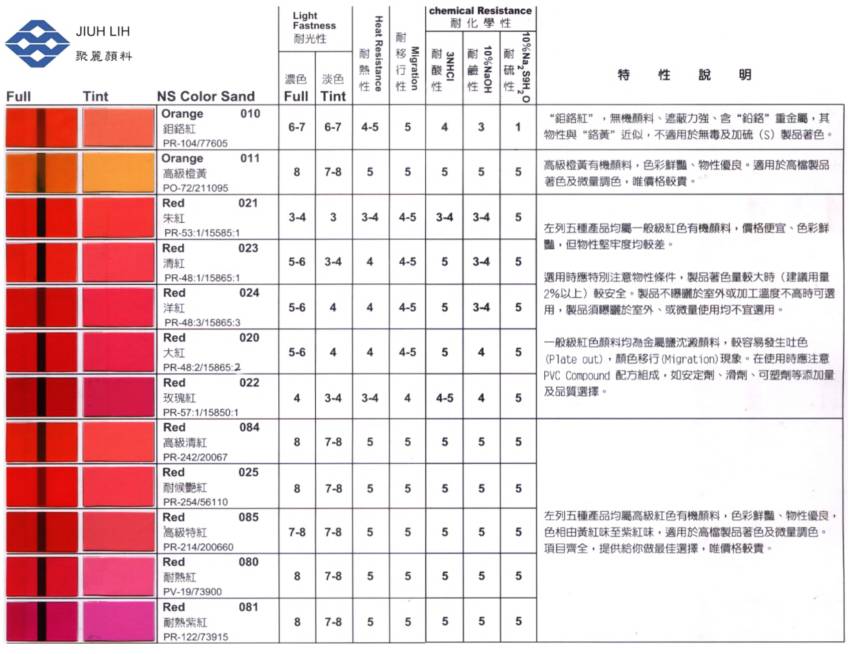
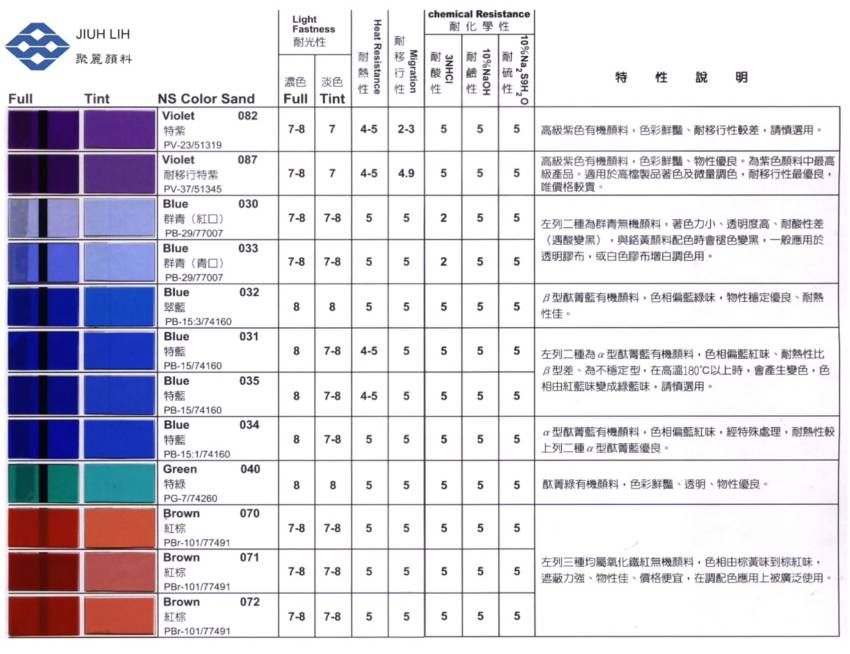
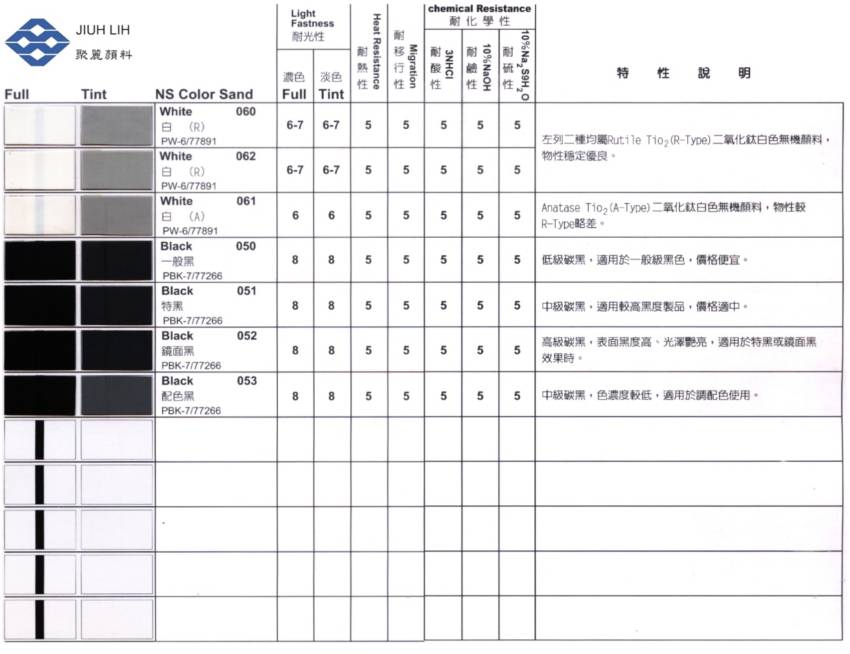
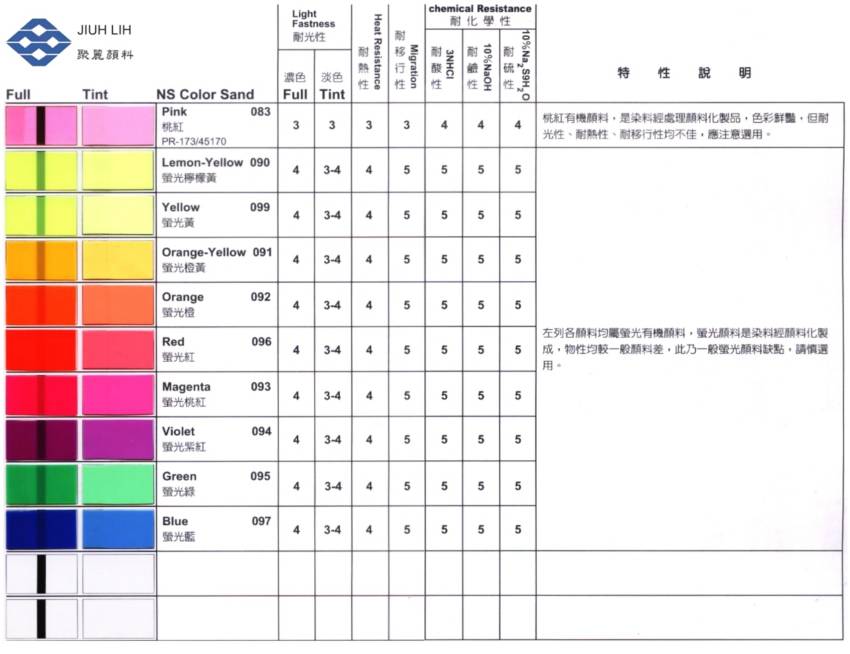
PVC :100
DINP :40
Stabilizers :2
Full Shade
|
|
With color
|
White
|
Black
|
Fluorescent
|
|
PVC Compound
|
100
|
100
|
100
|
100
|
|
NS-Color sand
|
0.4
|
2
|
0.4
|
4
|
Tint Shade
|
|
With color
|
White
|
Black
|
Fluorescent
|
|
PVC Compound
|
100
|
100
|
100
|
100
|
|
NS-Color
|
0.4
|
2
|
0.4
|
4
|
|
NS-060 White
|
2
|
-
|
2
|
2
|
|
NS-051 Black
|
-
|
0.02
|
-
|
-
|
1.Light Fastness
|
Scale
|
Result
|
|
8
|
Outstanding
|
|
7
|
Excellent
|
|
6
|
Very Good
|
|
5
|
Good
|
|
4
|
Fairty Good
|
|
3
|
Poor
|
|
2
|
Poor
|
|
1
|
Very Poor
|
2.Scale of Heat Resistance, Migration, Resistance to Acids or Alkalis, and Resistance to Sulfur.
|
Scale
|
Result
|
|
5
|
Very Good
|
|
4
|
Good
|
|
3
|
Fairty Good
|
|
2
|
Poor
|
|
1
|
Very Poor
|
